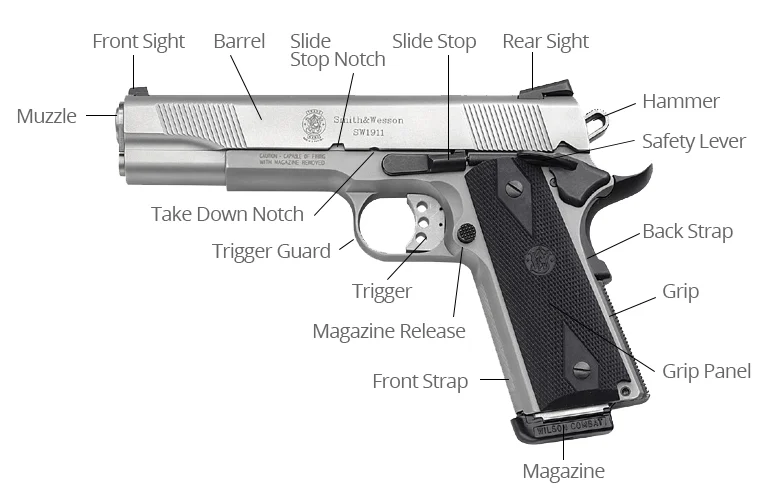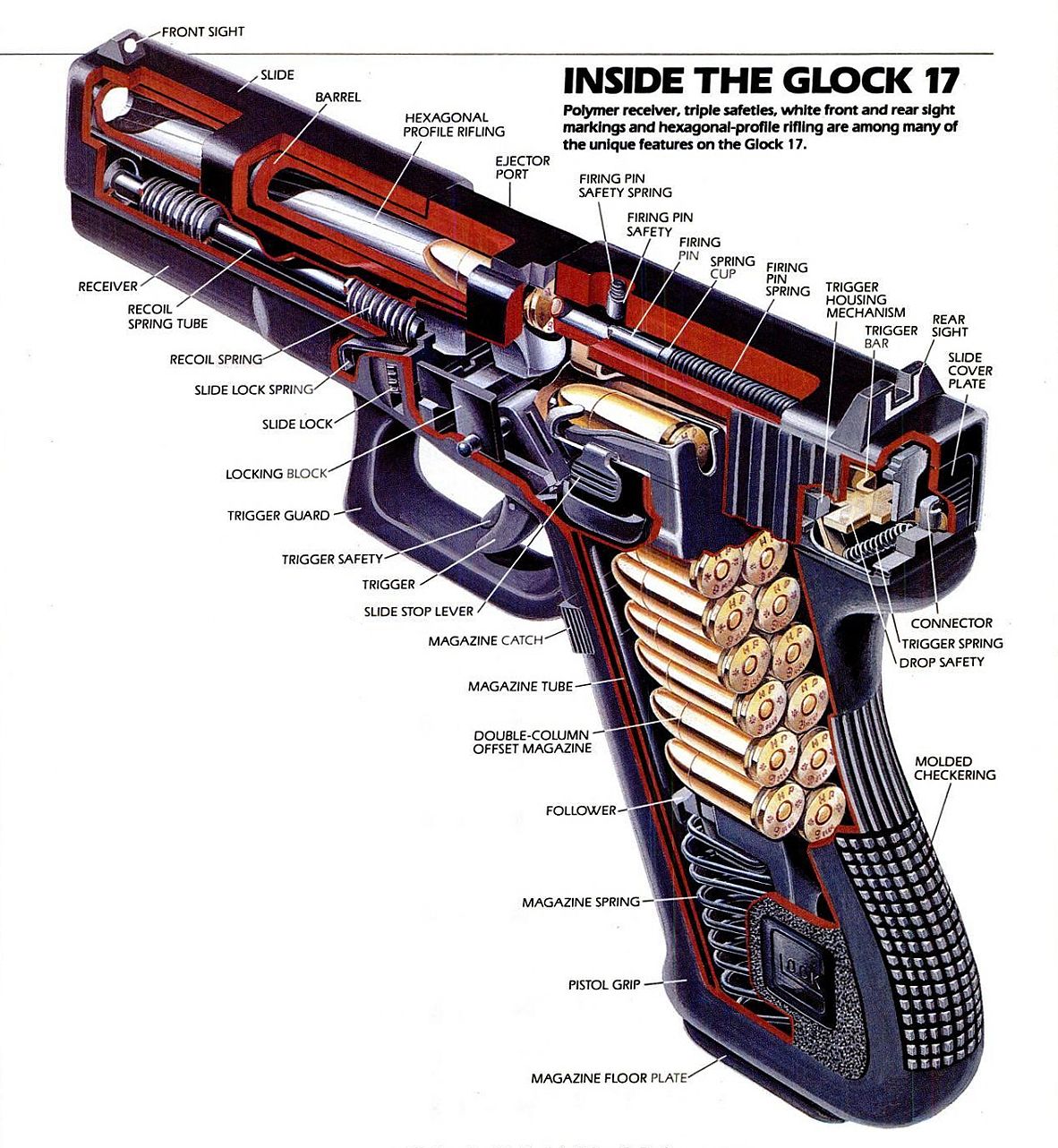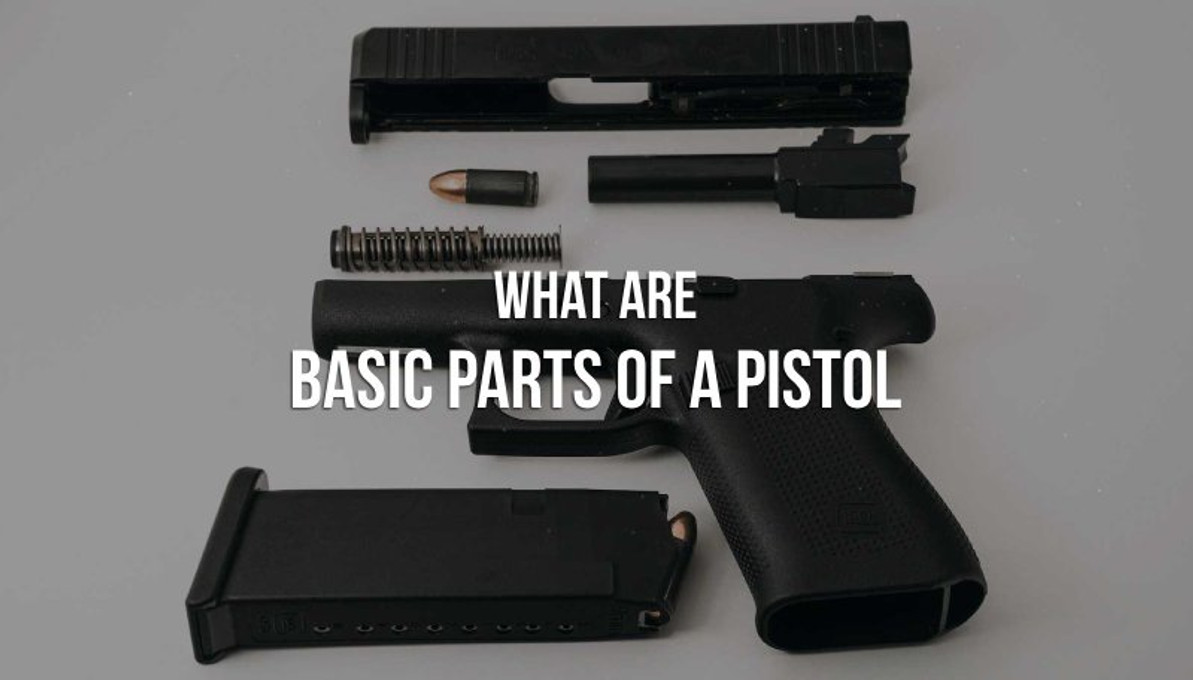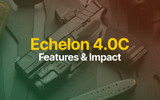Understanding the Basic Parts of a Pistol: A Guide for Beginners
So, you've decided to leap into the world of firearms, starting with the very basics, huh? Good on you! Whether it's for sport, self-defense, or just a new hobby, understanding the pistol parts is the first step towards being a responsible and proficient gun owner. So, let's get started. By the end of this post, you'll be well on your way to understanding your firearm like the back of your hand.
Semi-Auto Handgun Anatomy

Parts of the Pistol’s Frame
The frame is the part that holds everything together. It's typically made of metal (think about the classic 1911 pistol) or polymer material (Glock was the pioneer of polymer pistols) and consists of the grip and trigger guard.
Grip
The grip is the part you hold when firing the pistol. It's designed to be ergonomic, fitting comfortably in your hand for secure handling, and has textured surfaces for a firm hold.
At the bottom of the grip, you see the magazine well, an opening where you insert the magazine. It guides the magazine into the correct position within the pistol. When browsing gun stores, you might see pistols that have a flared mag well. It's an enhancement that improves reload speed providing a wider area for inserting a magazine, and gives a larger grip area for better stability and control.
Magazine
So, the magazine is a metal or polymer box to be inserted into the mag well. It holds rounds of ammunition and feeds the pistol. Inside the magazine, there's a strong spring and a follower - a flat piece that sits on top of the spring and pushes the rounds up into the pistol.
When shopping for a pistol, you might come across a spec called magazine capacity - how many rounds a magazine can hold. If you see something like 15+1 rounds, it means a pistol can hold 15 rounds in the magazine and 1 more in the chamber.
Magazine Release
Located on the side of the pistol frame, usually right above the top of the grip, you'll find a small button or lever. That's the magazine release. When you press the magazine release, it disengages the lock, allowing the magazine to be removed. Many defense pistols feature a drop-free magazine, which means it will just drop free to the ground when the mag release is on.
You might also notice that some pistols have an ambidextrous magazine release, meaning it can be accessed from both the left and right sides. It’s a handy feature for left-handed shooters or those who use their thumb to release the magazine.
Trigger Guard
The trigger guard is that loop of material you see surrounding the trigger. It provides a barrier to prevent accidental discharge of your firearm.
Parts of the Pistol’s Action
The action is the part that brings everything together and makes the magic happen through handling the loading, firing, and ejecting of the cartridges.
The specific design of the action can vary depending on the type of pistol - single-action, double-action, and striker-fired.
- Single-Action (SA): In single-action pistols, the trigger performs a single task: it releases the hammer or striker to fire the gun. It means you need to manually cock the hammer back before you can fire. A classic example is the iconic 1911 pistol. The advantage? A lighter, shorter trigger pull that can improve accuracy.
- Double-Action (DA): Double-action is a bit more complex. Here, the trigger performs two tasks: it cocks the hammer and then releases it to fire the gun. It means you can fire the gun just by pulling the trigger without needing to manually cock the hammer first. DA pistols often have a longer, heavier trigger pull which can be a downside for some shooters.
- Striker-Fired: Instead of a separate hammer and firing pin, a striker is essentially a firing pin under spring tension. When you pull the trigger, it fully cocks and then releases the striker to fire the gun. Striker-fired pistols are known for their consistent trigger pull and simplicity of design.
We've mentioned a lot of stuff here. Let's sort things out.
Trigger
It's the mechanism that the shooter manipulates to discharge the firearm. When you pull the trigger, it releases the hammer or striker, which then strikes the firing pin, igniting the primer of the cartridge, and firing the bullet.
You'll come across two designs: curved and flat-face. The curved shape naturally aligns with the curve of your finger, providing an intuitive feel. Some shooters find that this design gives them a better sense of control over the trigger pull and helps ensure consistent finger placement.
Flat-face triggers, on the other hand, are a newer trend in firearms. The main advantage here is that they provide a more consistent trigger pull, regardless of where your finger lands on the trigger. It can lead to improved accuracy for some shooters. Flat triggers also tend to have a shorter reach, making them a good choice for those with smaller hands.
Hammer / Striker
First up, the hammer. Picture a traditional old-school revolver in a cowboy movie. See that little lever at the back that the cowboy pulls back before taking a shot? That's the hammer, and many semi-auto pistols have that as well. It's an external component that, when released by the trigger, swings forward to strike the firing pin. This impact then sets off the primer in the cartridge, causing the gunpowder to ignite and send the bullet flying down the barrel. After the bang, the hammer can be manually cocked back or re-cocked by the cycling action of the firearm.
Striker systems are often found in modern pistols and are a more streamlined approach. Instead of a separate hammer sticking out and the firing pin, the striker is essentially a firing pin under spring tension. When you pull the trigger, the striker is released and moves forward to hit the primer directly. It makes for a simpler system with fewer moving parts and allows for a consistent trigger pull every time.
We also have pistols with an internal hammer hidden under the slide, which means you can't directly manipulate it by hand, just like the striker.
Firing Pin
The firing pin is like a small, slender rod that gets hit by a hammer upon the pull of the trigger. The firing pin, driven by this force, moves forward to strike the primer on the cartridge.
Sear
The sear is a small piece of metal responsible for holding back the hammer or striker in a cocked firearm. When you pull the trigger, the sear is pushed out of the way, releasing the hammer or striker.
Extractor and Ejector
The extractor and ejector work together to ensure that each spent casing is swiftly and efficiently removed after each shot.
Safety
There are several types of safety mechanisms, but they all serve the same basic purpose: to block the action of the pistol until the safety is released or pushed to the "off" position. It can involve blocking the trigger, the hammer, the firing pin, or some combination of these parts.
Some common types of safety mechanisms include:
- Thumb Safety: Usually found on the side of the firearm, it can be easily switched on or off with your thumb.
- Grip Safety: This type requires you to have a firm grip on the firearm before it can fire.
- Drop Safety: This safety mechanism prevents the firearm from discharging if it’s dropped.
- Trigger Safety: A small lever incorporated into the trigger that must be fully depressed (along with the trigger itself) for the gun to fire.
Barrel & Slide Components
The barrel is the long tube the bullet travels through after it's fired. The front end of the barrel is called the muzzle. The barrel's interior is the bore with spiraling grooves (rifles) to provide stability and accuracy to the bullet's flight. The chamber is the portion of the firearm that houses the round before it's fired.
On the top of the barrel, there is the slide. When you fire a round, the slide moves backward due to the recoil, ejecting the spent casing and loading a new round into the chamber from the magazine. Then, there's the slide lock is a small lever that can keep the slide in the open position after the last round has been fired, or it can be manually engaged. This allows for easy inspection and cleaning of the firearm.
Finally, the sights are used to aim the firearm. They provide a point of reference to ensure that the barrel of the gun is aligned with the target.
How a Semi-Auto Pistol Works

Here's a short explanation of how a pistol functions:
- Loading: The process starts by loading the ammunition (rounds) into the pistol’s magazine, which is then inserted into the pistol through the mag well.
- Chambering: When you're ready to fire, you pull back and release the slide. This action loads a round from the magazine into the chamber, making the pistol ready to fire.
- Firing: Pulling the trigger releases the hammer or striker, which hits the firing pin. The firing pin strikes the primer at the base of the cartridge, causing a small explosion.
- Ignition and Bullet Release: This explosion ignites the gunpowder inside the cartridge, creating a large amount of gas and pressure. This pressure pushes the bullet out of the cartridge and sends it flying down the barrel and out of the muzzle toward the target.
- Ejection: The pressure from the gas also pushes the slide back, which ejects the spent casing from the ejection port and loads a new round into the chamber from the magazine, ready for the next shot.
We hope this gives you a fundamental understanding of each part of a pistol and its function. However, confidence comes with practice and experience. Therefore, signing up for a pistol course is always the best route to take. In such a course, you'll get hands-on experience under professional guidance, which can truly cement your understanding and boost your confidence in handling pistols safely and effectively.
FAQ
What is the barrel of a pistol?
The barrel of a pistol is where the bullet travels out towards its target when fired.
What does the action do in a pistol?
The action of a pistol contains the components responsible for loading, firing, and ejecting cartridges.
What is a pistol's trigger and how does it work?
The trigger of a pistol, when pressed, releases the hammer or firing pin, which strikes the primer of the cartridge, igniting the gunpowder and firing the bullet.
What is the purpose of a pistol's magazine?
A magazine is a component inserted into the grip of the pistol. It holds additional rounds.
What is the role of the slide in a semi-automatic pistol?
In semi-automatic pistols, the slide moves back and forth when the gun is fired. It ejects the spent casing and loads a new round into the chamber from the magazine.
What is the function of the grip on a pistol?
The grip is the part of the pistol that is held in the hand. It's the part of the frame that provides control and stability when firing.
What safety features are commonly found on pistols?
Common safety features on pistols include manual safeties that block the trigger or firing pin until intentionally disengaged, and internal safeties such as firing pin blocks or drop safeties that prevent the gun from firing if it's dropped or mishandled.
What is the difference between a revolver and a semi-automatic pistol?
The main difference lies in their action: a revolver has a rotating cylinder that holds the ammunition, while a semi-automatic pistol uses a magazine to feed ammunition into the chamber.
Recent Posts
-
Echelon 4.0C Launch and Its Impact on Handgun Design
Recently, Springfield released the new Echelon 4.0C (aka Echelon Compact) 9mm pistol. Read to lear …Dec 18th 2024 -
The End of an Era: Why Cheaper Than Dirt Stopped Selling Guns
Recently, Cheaper Than Dirt, a major online gun store based in Fort Worth, made headlines by steppin …Oct 24th 2024 -
A Guide to Hunting, Sporting & AR-15 Rifle Barrels
In this post, we’re discussing rifle barrel types in terms of materials, finishes, profiles, twis …Jun 11th 2024




